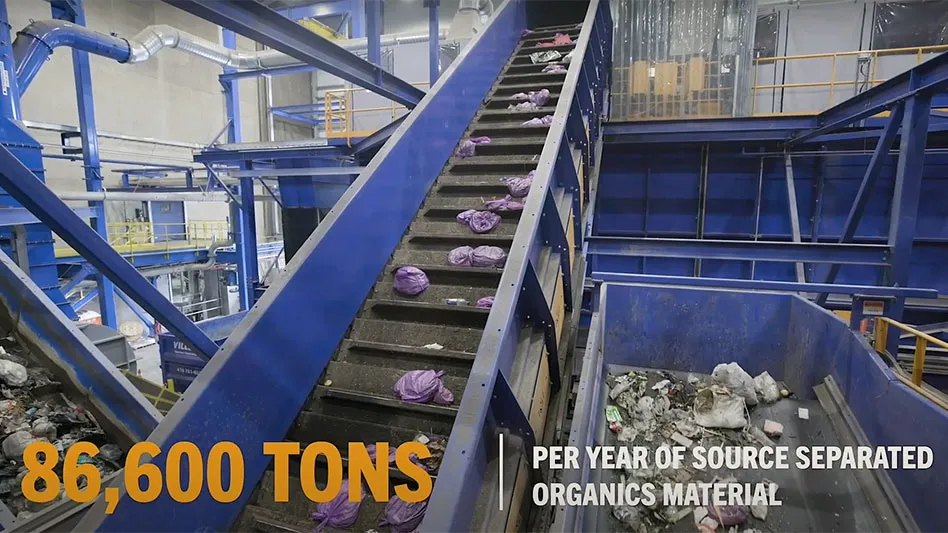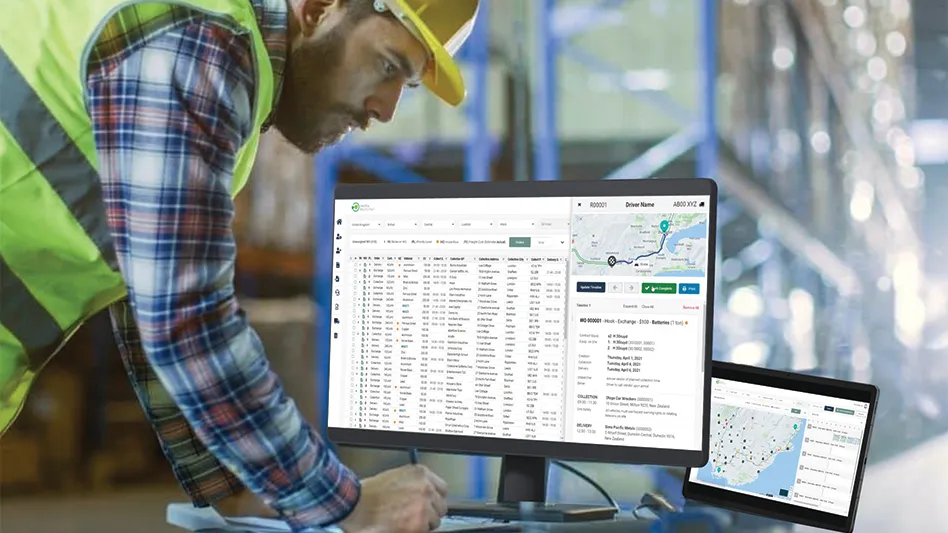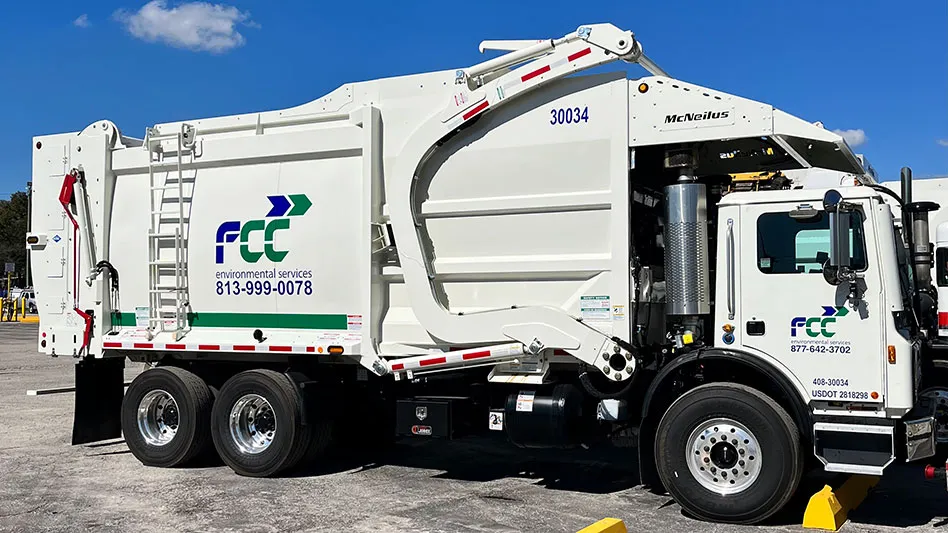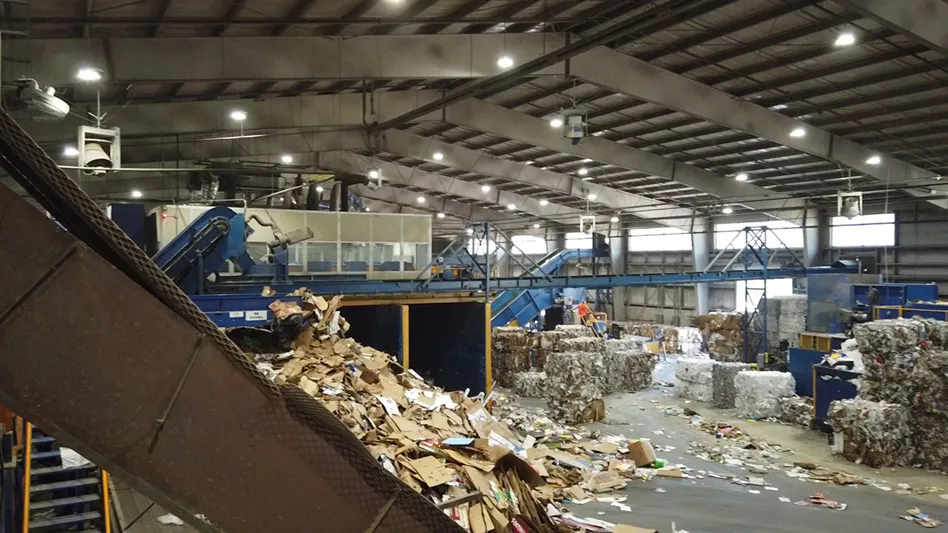
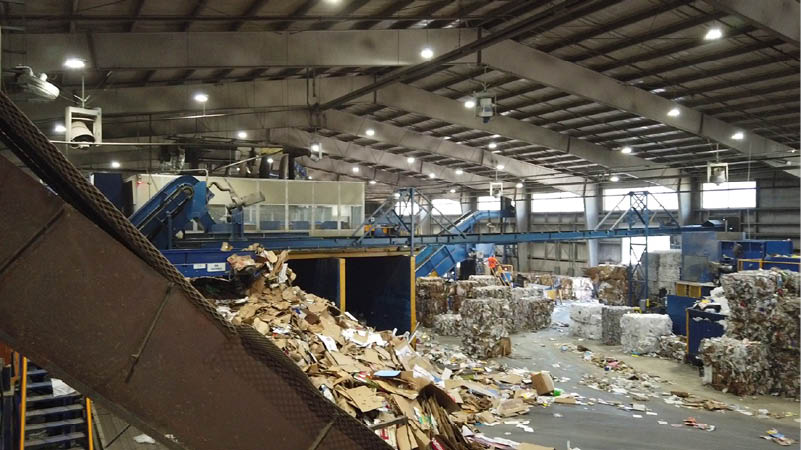
Dust in transfer stations and material recovery facilities (MRFs) can create health, regulatory and safety issues for owners and operators, so it is important to control its spread efficiently and consistently.
A variety of strategies and equipment can control dust and odor in facilities, but choosing the best solution for an application can be complex.
Broadly speaking, dust can be controlled via misters or fans. A variety of firms supply each, and Jordan Newton, chief operating officer at SonicAire, Winston-Salem, North Carolina, discusses some of the reasons the company’s dust control fans make sense in MRFs and transfer stations.
Andrea Rodriguez, director of engineering at FCC Environmental Services, Houston, says some facilities she has helped design, including Western Placer County Waste Management Authority’s site in Roswell, California, chose to use Norwalk, Connecticut-based Van Dyk Recycling Solutions’ BeeFoam system to help control dust.
Dangers of dust
If left uncontrolled, dust can result in fines and citations, but the real danger is to employees’ health and the overall facility, Newton says.
One primary danger associated with dust is the risk of fires, he says. If too much dust accumulates on surfaces within a facility or is suspended in the air, it can provide fuel for a fire.
An overly dusty MRF lacks only an ignition source for a fire, Newton says. “You’ve got fuel from the dust; you’ve got suspension from the dust; you’ve got confinement, generally, if you’ve got four walls; and there’s oxygen in the air.”
Usually, he says, excessive dust provides additional fuel to a fire started from another source, which can sometimes be damaged lithium-ion batteries.
As understanding of the dangers that combustible dust presents increases, so has the associated liability.
“Insurance companies are becoming more and more aware of the fire hazards and risks around combustible dust,” Newton says.
Dust also can become a health hazard if it’s suspended in the air and inhaled by employees, which he says is possible in transfer stations and MRFs as material is moved and processed.
Keeping dust down
Newton says SonicAire’s fans are designed to prevent dust from reaching hard-to-reach locations within a facility. The fans create barriers of air over areas that produce dust, preventing it from floating up to ledges, the ceiling of a facility and other areas that are difficult and time-consuming to clean, he explains. “You can think of it as an air curtain—we call it ‘barrier air.’”
The fans can be aimed precisely and are easy to adjust, Newton adds.
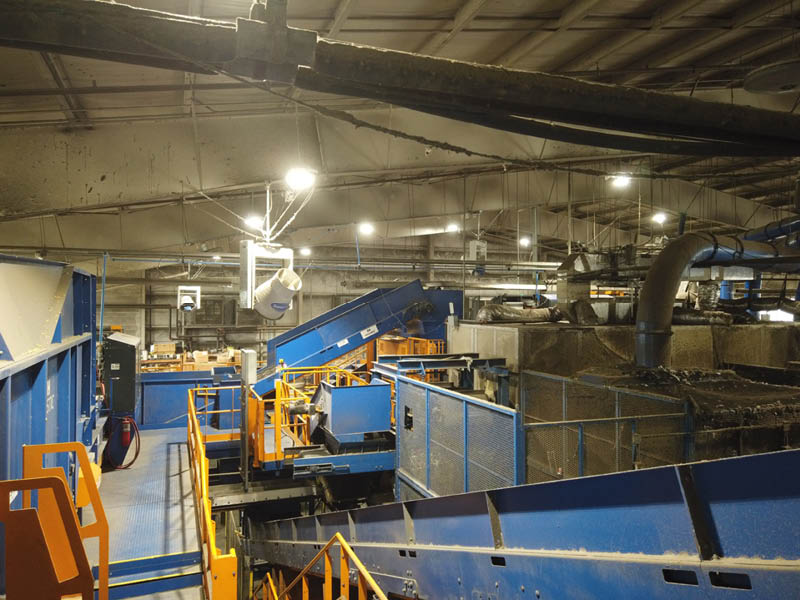
By creating a current of air over equipment and areas where materials are moved, he says dust is confined and easy to collect.
Dust control fan systems also do not have some issues commonly associated with systems featuring water or moisture, Newton adds.
“From what I’ve heard, misters are always a challenge because you have to keep adding water to them or minimizing leaks,” he says, adding that they also can create an issue by rusting equipment.
An alternative to fan systems is a vacuum system, but Newton says a third-party Class 2 industrial system would be needed. As for canister vacuums, these are not appropriate for use in waste and recycling facilities as they’re not rated for environments with combustible dust, Newton adds.
“What you can end up doing is creating a small bomb,” he says, adding that a spark from the motor can ignite dust within it.
An option for open areas
Western Placer County is a growing area, and Rodriguez says some of that growth is planned near the county’s Roswell waste and recycling site—making dust and odor control a priority so neighbors do not consider the site a nuisance.
“The site has a landfill, a compost operation, a C&D [construction and demolition] operation, a drop-off area and a MRF. It’s a big, big site,” she says.
Rodriguez says a spray system will work well at the site, which includes open areas.
The SonicAire fans generally are affixed to MRF ceilings and are best suited to enclosed areas, Newton says. For Western Placer’s MRF, Rodriguez says Van Dyk’s BeeFoam system is ideal because it dampens material on the front end of the system, so dust isn’t created during processing.
“There is a mixture of water with a patented solution, which is EPA approved, that is biodegradable and environmentally friendly,” she explains. “They use the spray in the inbound part of the facility, and then the dust is kept down.”
Rather than creating a curtain of air to prevent dust from spreading, the system sprays material as it passes along a conveyor before it’s processed.
“The main thing that we like is that it is an environmentally friendly product, and it’s really easy to handle,” Rodriguez says. “It’s not a complicated system, and it’s very easy to install or [uninstall] it.”
A downside of the system, she says, is that it is “pricey” because it’s a relatively new product.
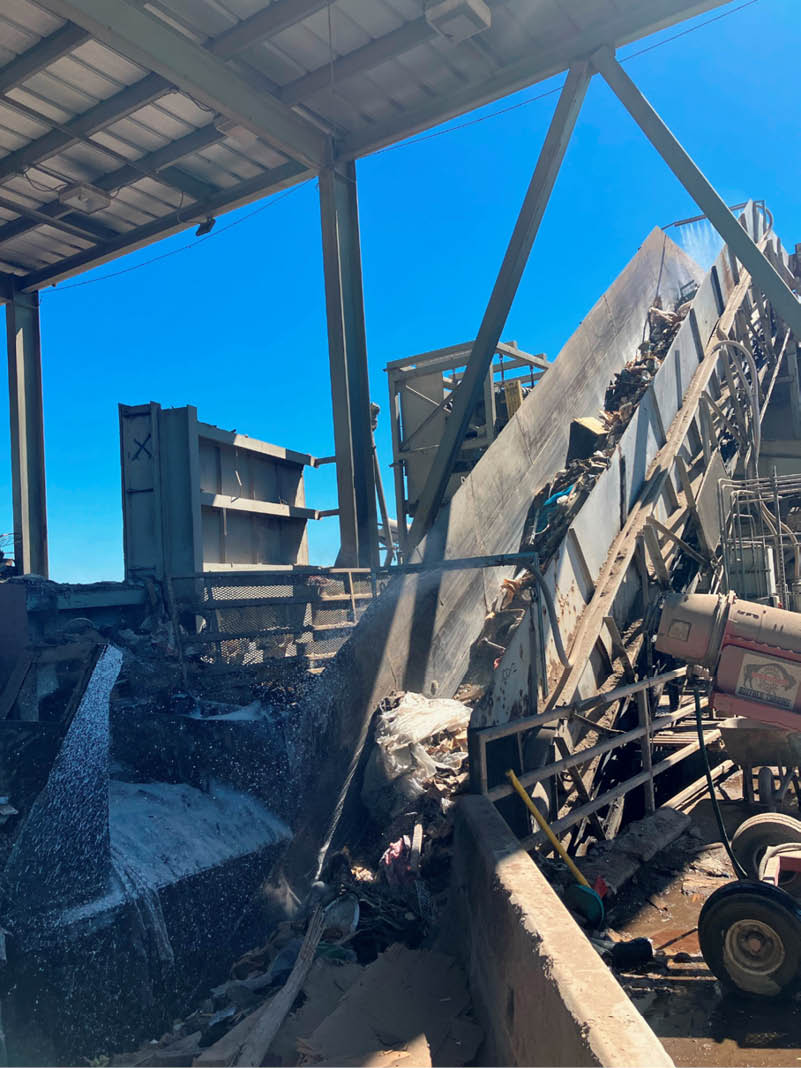
Doing it the old-fashioned way
Newton says the alternative to a fan system such as the one from SonicAire or a spray or foam solution is manual cleaning, which he says is costly.
“There are 2 million less people in the labor force today than if COVID had not happened,” he says.
The personnel savings realized by installing a dust suppression system would “really just depend on how serious they are about their housekeeping, how much effort they’re putting into it and how much effort they should be putting in.”
One of SonicAire’s customers, the Horry County Solid Waste Authority (HCSWA), had employees clean the facility prior to acquiring the system.
“We were taking man lifts and putting people in harnesses and sweeping,” HCSWA Deputy Director of Recycling Rodney Cannon says in a YouTube video. “So, it took us a process of probably a couple of weeks just to get ceilings cleaned.”
Since installing the SonicAire fans, he says the facility has been much cleaner.
With a tight labor market, Newton says operators that have employees cleaning up dust will lose some of them, and replacements are increasingly hard to come by.
“You’re going to pay more for them, probably, and they’re going to be less efficient than the person before,” he says.
Rodriguez says the system an operator chooses will be driven somewhat by the facility design. Regardless, it’s important to control dust in a more systematic way than by manual cleaning, which can be inconsistent in the case of employee turnover.
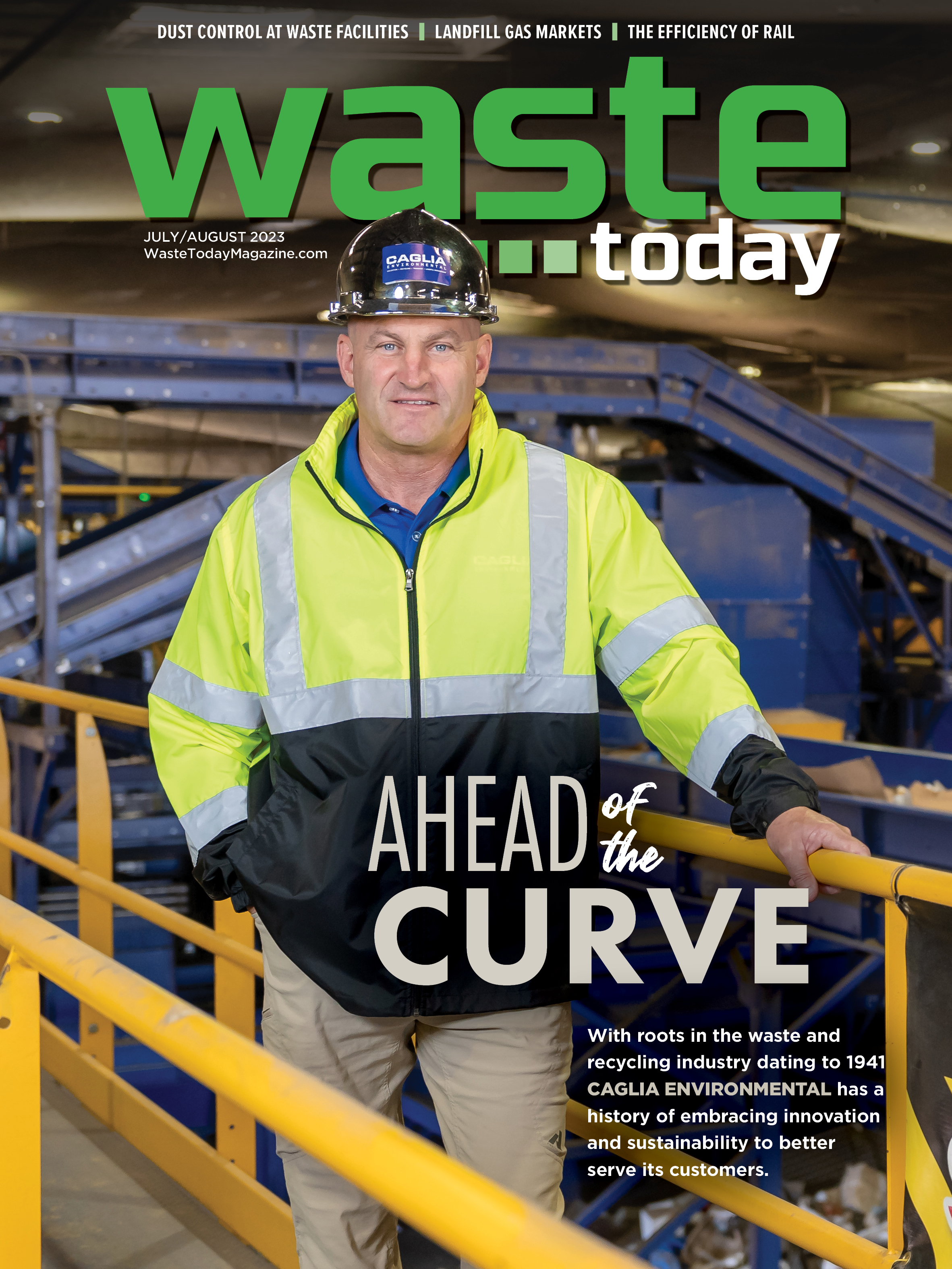
Explore the July August 2023 Issue
Check out more from this issue and find you next story to read.
Latest from Waste Today
- Bioenergy Devco honored at SEAL Awards
- AMCS showcasing Performance Sustainability Suite at WasteExpo
- New Way and Hyzon unveil first hydrogen fuel cell refuse truck
- NWRA honors award recipients during annual breakfast at WasteExpo
- Rubicon selling fleet technology business, issuing preferred equity to Rodina Capital
- Machinex to feature virtual tour of Rumpke MRF at WasteExpo
- Reworld releases 2024 sustainability report
- Novolex invests in Ozzi

